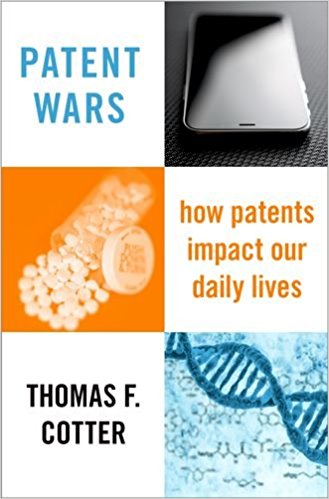Bloomberg News reports that International Trade Commission (ITC) Administrative Law Judge Thomas Pender has decided not to recommend issuing an order excluding iPhones from entry into the United States, on public interest grounds. (The ALJ's "Final Initial Determination" is not public yet, however.) This is the latest development in the ongoing patent feud between Qualcomm, which filed the complaint triggering the investigation, and Apple. Although the judge found that Apple infringed one of the three patents in suit by selling phones incorporating infringing chips made by Intel, and although none of the patents at issue is standard-essential, the ALJ concluded that the public interest nevertheless weighs against entry of an exclusion order. The five-member ITC will next review the ALJ's recommendations. Meanwhile, the same patents are at issue in a parallel federal district court action; and another ITC investigation involving the same parties, but different patents, also remains pending.
Also according to the Bloomberg story, Qualcomm says that "it makes no sense" to find infringement and yet not enter an exclusion order, but of course the governing statute specifically authorizes withholding exclusion orders based on the public interest. The exercise of such authority is rare, but readers will recall that the U.S. Trade Representative invoked the public interest ground five years ago to veto an exclusion order directed against Apple, in a case brought by Samsung and involving standard-essential patents. (See here.) I'm sure there will be the predictable hue and cry from the pro-injunction crowd, but think about it: does it really make sense for the U.S. to make use of the Tariff Act, of all things, on behalf of one U.S. company to enjoin the importation and distribution of goods by another U.S. company--particularly when (as here, and as usually is the case) there is parallel U.S. patent infringement litigation between the same parties? Or to put it another way, does it make sense to have one forum where injunctions are discretionary (but still awarded in 75% of cases), and another where they are mandatory absent a (rare) application of the public interest exception? Ot to put it yet another way, if there is any logic in having such a parallel forum, why not grant that forum the same discretion that federal district courts have to grant or deny injunctions (technically, exclusion orders are not injunctions, but functionally they are pretty much the same thing) and, if necessary, award ongoing royalties?
To be sure, I don't know if ALJ Pender's findings are correct (the opinion isn't public yet, as stated above). Injunctions often are warranted, for a variety of very good reasons. But often is not always, and even if one thinks that U.S. courts should be granting them more frequently than they now do, it still would make little sense to have dual forums in which the standards governing injunctions can be so radically different.
For further discussion, see Florian Mueller's write-up on FOSS Patents.

